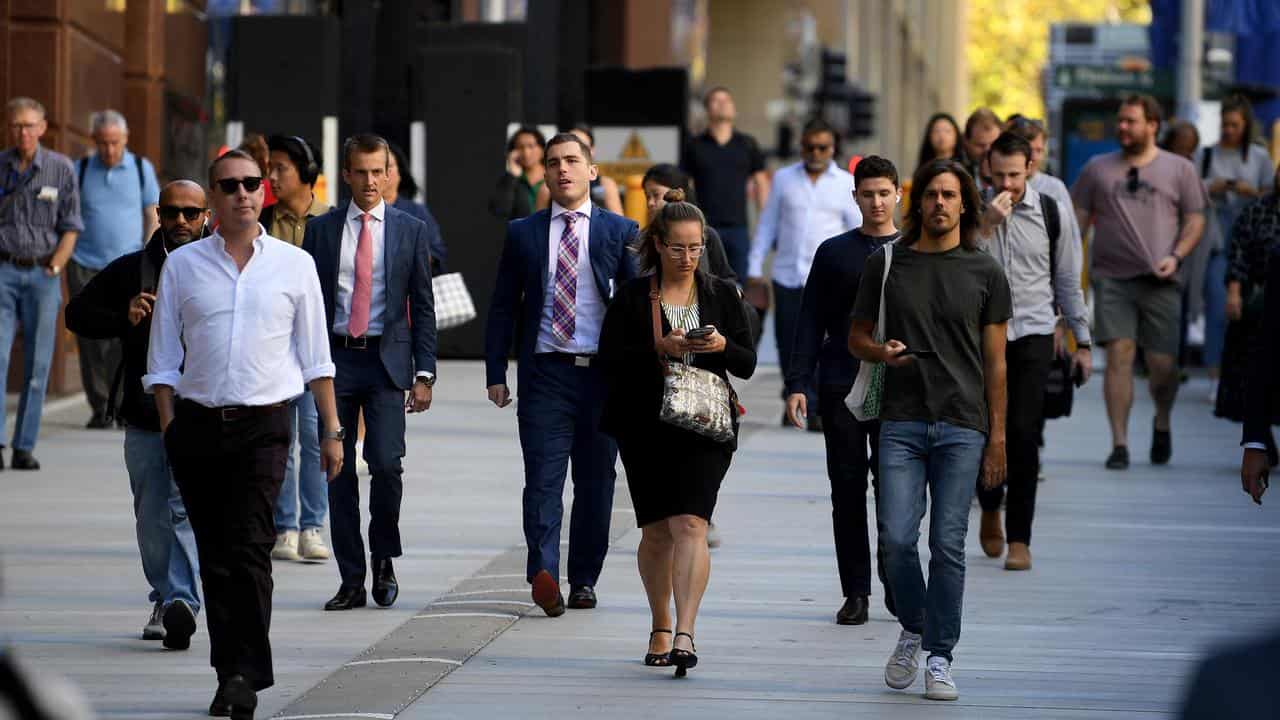
Heftier sums have been landing in bank accounts in a welcome development for financially-stretched Australian workers.
Another strong quarter for pay growth is expected when the Australian Bureau of Statistics releases its December wage price index on Wednesday.
A record-breaking 1.3 per cent quarterly increase in the three months to September was recorded by the key measure of wages growth in the economy.
Annually, wage growth was running at four per cent.
But economists say the pace of growth should slacken a bit from the highs of the last print.
Strong demand for labour in part explained the record growth through to September. In a tight labour market, employers will offer higher salaries to entice staff.
The industrial umpire's minimum and award wage boost and a pay bump for aged care workers also fed into the robust quarterly result.
Commonwealth Bank economist Stephen Wu said the jobs market had started to loosen in the final months of 2023 and an improving balance between labour supply and demand would lead to slightly weaker wage growth.
The bank's economists expect the wage price index to lift 0.9 per cent in the fourth quarter.
"That should see the annual rate unchanged at four per cent, which is where we see wages growth peaking," Mr Wu wrote in a note.
The average weekly earnings index is also scheduled this week, which is a broader measure of pay movements than the wage price index.
The bureau will release the weekly earnings data on Thursday.
The Reserve Bank will also tease out its decision to keep interest rates on hold in the minutes from the February meeting.
The central bank embarked on an interest rate hiking cycle in 2022 to target rising inflation.
Higher interest rates are working to slow the economy, which means weaker demand and less pressure on prices. Inflation is coming down and more hikes are considered unlikely, with the focus now on the timing of cuts.
The minutes, due on Tuesday, will hopefully contain some hints. Though Reserve Bank officials have been fairly active in the public eye of late, so there may not be much new information.
US investors seem to doubt expectations the Federal Reserve will pull the trigger on an interest rate cut, with Wall Street tumbling on Friday.
A Labor Department report showed producer prices increased more than expected in January, feeding fears inflation is picking up after months of cooling. After five consecutive weeks of gains, all three indexes posted a weekly decline.
The S&P 500 lost 24.18 points, or 0.49 per cent, to end at 5,005.15 points, while the Nasdaq Composite lost 132.38 points, or 0.83 per cent, to 15,775.65. The Dow Jones Industrial Average fell 149.48 points, or 0.39 per cent, to 38,623.64.
Australian futures rose 8.000 points, or 0.10 per cent, to 11,517.
The benchmark S&P/ASX200 index finished Friday up 52.6 points, or 0.69 per cent, to 7,658.3, while the broader All Ordinaries gained 53.9 points, or 0.69 per cent, to 7,905.6.




